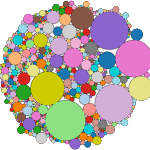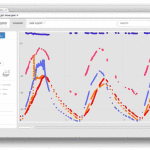How does Big Data help us understand the vastness of space? Ask …

S
Members of NASA’s Jet Propulsion Lab’s Data Science community — including Rob Witoff, Tomas Soderstrom, and Andrew Hart — are here to answer our questions about using data, visualization, modeling, and just what we might be able to do with it all in space.
Top image: A visualization from the IT data science team analyzing education & diplomas across JPL.
The Data Science team includes a mix of computer scientists, designers, and big data experts, all working on new ways to apply the data and technology generated by JPL.
S
Image: An interactive search & charting prototype created with Andrew Hart for the Curiosity Thermal Operations Team. / JPL.
Today, three of its scientists, all representing different areas of research and expertise are joining us! They are:
Rob Witoff — The IT data scientist at the NASA Jet Propulsion Laboratory and a Y Combinator startup founder. His background includes development lead for interplanetary data visualization software and space station systems lead for the experimental OPALS laser communication satellite. Witoff is NASA’s first IT data scientist and his data science team is incubating solutions to Big Data problems for space-bound explorers, earthborn assets and the people that make them possible.
Tomas Soderstrom — As IT CTO at the Jet Propulsion Laboratory, Tom leads a collaborative, practical, hands-on approach with JPL and industry to investigate and infuse emerging IT technology trends that are relevant to JPL, NASA, and large enterprises. He consults with industry and government leaders on cloud computing, big data, mobility, consumerization and how to transform IT into Innovating Together.
Andrew Hart is a senior software engineer and full-time member of the Data Management Systems and Technologies group at JPL helping to implement scalable data systems for research projects. He brings his computer science background and creative talents to the design and development of data management components and web interfaces for a broad array of projects across scientific disciplines ranging from radio astronomy, to climate change, to cancer research.
Rob, Tomas, and Andrew will be joining us from 10:30-11:30 a.m. (Pacific time). So start asking your questions now about data, modeling, cloud computing, and what it all means for our future both in space and on Earth right now!
Credit:
How does Big Data help us understand the vastness of space? Ask …


